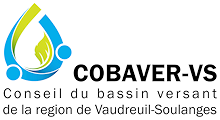Sometimes underestimated, plants (trees, shrubs and herbaceous plants) provide a great protection to waterways. A group of different plant species form what is called a riparian strip. Riparian strips provide essential protection to both aquatic and terrestrial wildlife and habitats for many reasons.
Firstly, water sanitation is one of the most important objectives for the creation of riparian strips. They remove excess nutrients and sediment from surface runoff and shallow groundwater. Some toxic contaminants (e.g. pesticides) are also filtered. They shade streams throughout the year to optimize light and temperature conditions for aquatic plants, fish, and other animals. Riparian ecosystems are extremely productive and have diverse habitat values for biodiversity through shelters and corridors that are important as migration and dispersal routes.
A second objective, as important, is the streambank stabilisation. Deeper- and shallow-rooted riparian vegetation act differently to maintain shore and decrease erosion, therefore excess sedimentation.
What can you do?:
- Each citizen can act by planting native herbaceous plants, shrubs and trees along water shores. Inquire about citizen’s initiatives/activities in your community.
- On agricultural lands, a buffer strip of a minimum of 3 m must be conserved by law (Protection Policy for Lakeshores, Riverbanks, Littoral Zones and Floodplain).
- On all other land types, a 10 m minimum riparian strip for slopes lesser than 30% or a 15 m minimum riparian strip for slopes greater than 30% is mandatory.
- Good lawn maintenance practices also have an impact on waterways. Good practices are essential even far from waterways as runoff water will always end up in a stream, river or lake.
- Use phosphate free products; favor the use of ecological and biodegradable products.
To know more, consult the Protection Policy for Lakeshores, Riverbanks, Littoral Zones and Floodplain

